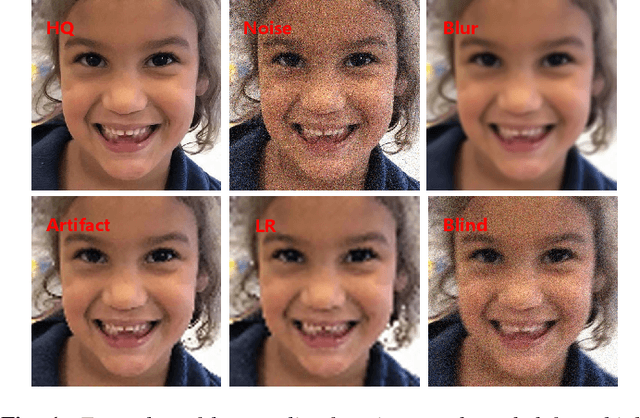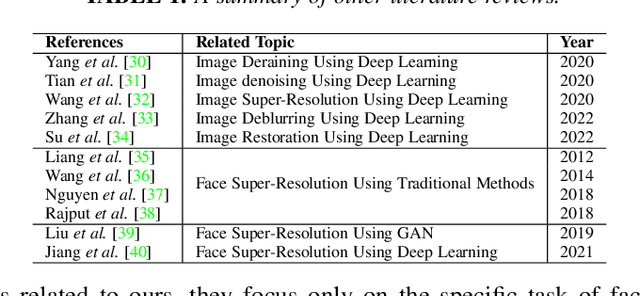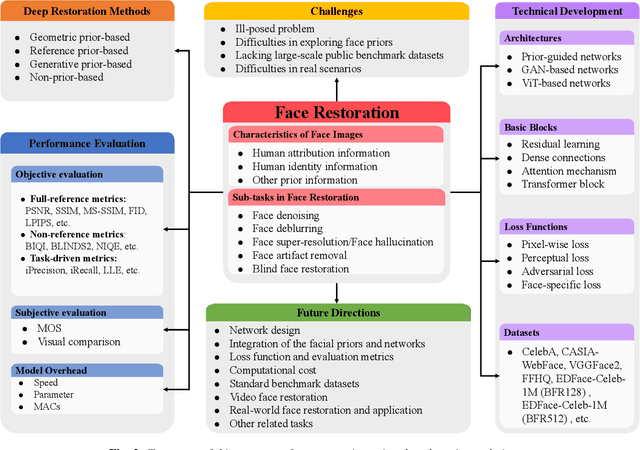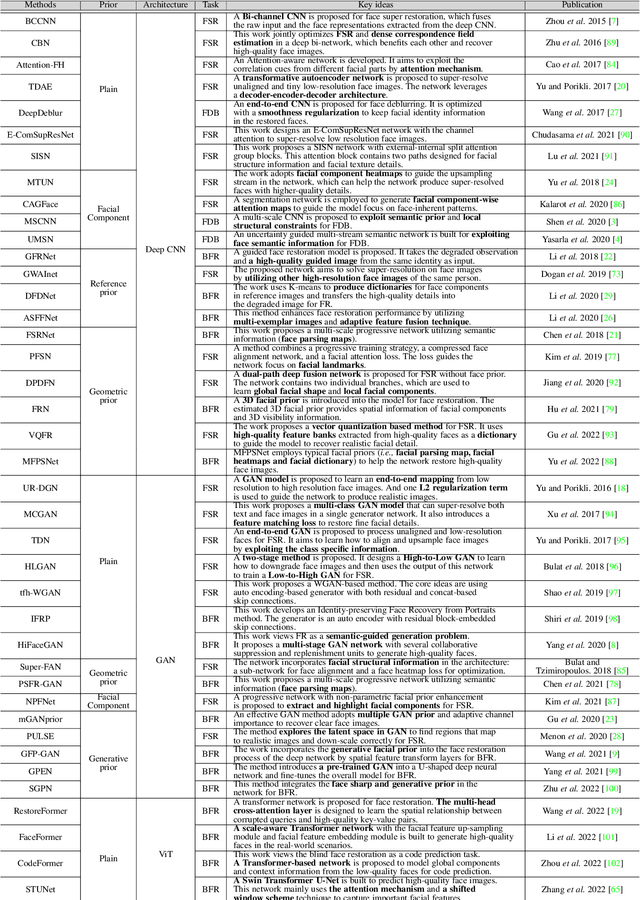Xuanxi Chen
Deep Video Restoration for Under-Display Camera
Sep 09, 2023



Abstract:Images or videos captured by the Under-Display Camera (UDC) suffer from severe degradation, such as saturation degeneration and color shift. While restoration for UDC has been a critical task, existing works of UDC restoration focus only on images. UDC video restoration (UDC-VR) has not been explored in the community. In this work, we first propose a GAN-based generation pipeline to simulate the realistic UDC degradation process. With the pipeline, we build the first large-scale UDC video restoration dataset called PexelsUDC, which includes two subsets named PexelsUDC-T and PexelsUDC-P corresponding to different displays for UDC. Using the proposed dataset, we conduct extensive benchmark studies on existing video restoration methods and observe their limitations on the UDC-VR task. To this end, we propose a novel transformer-based baseline method that adaptively enhances degraded videos. The key components of the method are a spatial branch with local-aware transformers, a temporal branch embedded temporal transformers, and a spatial-temporal fusion module. These components drive the model to fully exploit spatial and temporal information for UDC-VR. Extensive experiments show that our method achieves state-of-the-art performance on PexelsUDC. The benchmark and the baseline method are expected to promote the progress of UDC-VR in the community, which will be made public.
A Survey of Deep Face Restoration: Denoise, Super-Resolution, Deblur, Artifact Removal
Nov 05, 2022



Abstract:Face Restoration (FR) aims to restore High-Quality (HQ) faces from Low-Quality (LQ) input images, which is a domain-specific image restoration problem in the low-level computer vision area. The early face restoration methods mainly use statistic priors and degradation models, which are difficult to meet the requirements of real-world applications in practice. In recent years, face restoration has witnessed great progress after stepping into the deep learning era. However, there are few works to study deep learning-based face restoration methods systematically. Thus, this paper comprehensively surveys recent advances in deep learning techniques for face restoration. Specifically, we first summarize different problem formulations and analyze the characteristic of the face image. Second, we discuss the challenges of face restoration. Concerning these challenges, we present a comprehensive review of existing FR methods, including prior based methods and deep learning-based methods. Then, we explore developed techniques in the task of FR covering network architectures, loss functions, and benchmark datasets. We also conduct a systematic benchmark evaluation on representative methods. Finally, we discuss future directions, including network designs, metrics, benchmark datasets, applications,etc. We also provide an open-source repository for all the discussed methods, which is available at https://github.com/TaoWangzj/Awesome-Face-Restoration.
 Add to Chrome
Add to Chrome Add to Firefox
Add to Firefox Add to Edge
Add to Edge